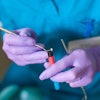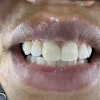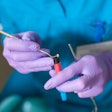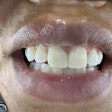As dental implants have become common procedures, so has preimplant preparation of the bone. Accordingly, the ridge-split procedure to widen and augment the alveolar ridge is finding renewed interest.
The Journal of Oral Implantology presented a detailed description of the alveolar ridge-split procedure, supplemented by photographs, in the February issue (2013, Vol. 39:1, pp. 59-68). Establishing an alveolar ridge of proper dimensions has become essential with the advent of root-form endosseous dental implants.
The procedure described in the journal article is a form of ridge widening or augmentation. In cases of narrow alveolar ridges, it has proved to be consistently successful. Use of this minimally invasive technique has many advantages in the preprosthetic stage of dental implants. Benefits include a low risk of inferior alveolar nerve injury, less pain and swelling, and no need for a second surgical site as a donor.
Because of differences in bone density, the ridge-split technique requires a single surgical stage in the maxilla and a two-stage approach in the mandible. The two stages of mandible surgery consist of corticotomy, followed by splitting and grafting performed three to five weeks later. The staged approach of the ridge-split procedure has shown a higher implant success rate and better buccal cortical bone preservation.
A practitioner's experience is an important component of this technique, the publication noted. This surgery modifies the configuration of the bone and is usually performed in a closed fashion and uses a tactile sense. The authors emphasize the need for careful manipulation of the thin ridge, knowledge of precise surgical principles, and specialized training.



















